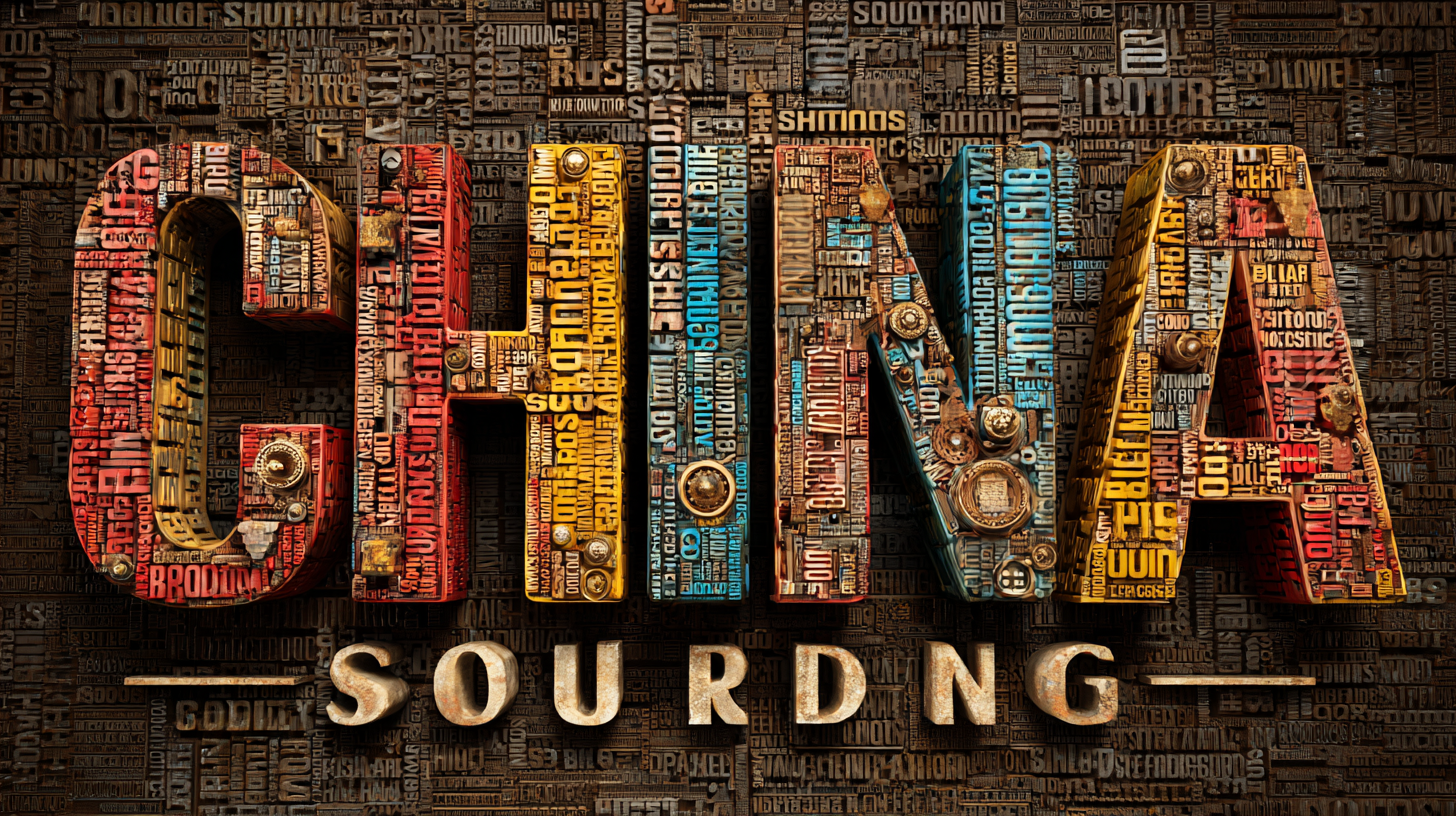

In recent years, China has solidified its position as the world's leading manufacturing hub, accounting for approximately 28.7% of global manufacturing output, according to the National Bureau of Statistics of China. As businesses worldwide continue to seek competitive advantages and cost-effective solutions, sourcing products from China has become increasingly attractive. A report by McKinsey & Company highlights that over 70% of global buyers are looking to China for high-quality goods at lower prices, emphasizing the importance of effective sourcing strategies. However, navigating the complexities of the Chinese market requires comprehensive knowledge and the right resources. This ultimate guide aims to equip global buyers with the essential tools and insights needed to source the best products from China, ensuring they can maximize their returns while minimizing risks.

Sourcing products from China has become a pivotal strategy for global buyers looking to maximize efficiency and minimize costs. However, several common problems often hinder this process. Research from Statista shows that about 30% of global businesses experience quality control issues when sourcing from Chinese manufacturers. This highlights the necessity of rigorous quality assurance protocols, as poor product quality can lead to significant financial losses and damage to brand reputation.

Another challenge faced by buyers is the lack of transparency in communication. According to a report by McKinsey, around 38% of foreign buyers cite communication barriers as a critical issue when engaging with Chinese suppliers. These barriers can lead to misunderstandings regarding product specifications, timelines, and costs. To mitigate this risk, investing in local intermediaries or utilizing sourcing platforms equipped with bilingual support can enhance clarity and efficiency.
Lastly, navigating the complex regulatory landscape can prove daunting for many international buyers. The World Bank indicates that over 50% of businesses face import/export compliance challenges in China. This underscores the importance of thorough due diligence and understanding local regulations to avoid delays and additional costs during the shipping and customs process. By addressing these common problems, global buyers can improve their sourcing experience and establish more sustainable partnerships with Chinese suppliers.
In today’s global marketplace, quality control issues in Chinese manufacturing have become a critical concern for international buyers. According to a 2021 report by Statista, approximately 22% of imported goods from China were found to have quality discrepancies, underscoring the importance of diligent sourcing practices.
Factors contributing to these issues can include insufficient quality assurance protocols, lack of standardized manufacturing processes, and communication barriers between manufacturers and buyers.
Moreover, the acceptance of specifications and tolerance levels is not always consistent, which can further complicate product quality. A study by the China National Institute of Standardization reveals that 30% of small and medium-sized enterprises in China do not have formal quality control systems in place. This emphasizes the necessity for global buyers to conduct thorough factory audits and insist on certifications such as ISO 9001, which ensures that manufacturers adhere to international quality standards. By implementing these strategies, buyers can mitigate risks and ensure they acquire products that meet their expectations.
When sourcing products from China, language barriers can significantly hinder effective communication, making the procurement process challenging for global buyers. These barriers often lead to misunderstandings about product specifications, pricing, and shipping terms. Utilizing tools such as instant language translators can mitigate these challenges, allowing for clearer dialogues between buyers and suppliers. By adopting these technologies, businesses can avoid common pitfalls and streamline their sourcing efforts.
Additionally, human expertise plays a crucial role in bridging these gaps. Professionals like Paschalis Nicolaou, who are multilingual and possess extensive experience in international trade, can facilitate smoother transactions. Their understanding of both the language and cultural nuances helps ensure that all parties are on the same page. By fostering these relationships and investing in communication tools, global buyers can unlock the full potential of Chinese markets and enhance their product sourcing strategies.
Sourcing products from China can be a lucrative venture for global buyers, but navigating the complexities of shipping and logistics often presents significant challenges. One of the primary concerns is the vast geographical distance and varying regulations between countries. Buyers must familiarize themselves with both export regulations in China and import regulations in their own country to ensure compliance and avoid potential delays.
Moreover, logistics become even more complicated when considering the variety of shipping options available. Air freight may be faster but is often significantly more expensive, while sea freight is cost-effective but can introduce long lead times. Establishing a reliable relationship with freight forwarders can greatly mitigate these challenges. They can provide valuable insights into the best shipping routes, current tariffs, and help manage customs clearance effectively, ensuring that products arrive on time and within budget.
Additionally, it is crucial to be proactive in addressing potential issues such as changes in shipping costs, political upheaval, or natural disasters. By staying informed and flexible, global buyers can better navigate the shipping landscape and streamline their sourcing process from China.
| Product Category | Average Price (USD) | Lead Time (Days) | Min Order Quantity | Shipping Method | Shipping Cost (USD) |
|---|---|---|---|---|---|
| Electronics | 150 | 30 | 100 | Air Freight | 200 |
| Apparel | 30 | 45 | 200 | Sea Freight | 100 |
| Home Goods | 75 | 60 | 150 | Air Freight | 150 |
| Toys | 20 | 30 | 300 | Sea Freight | 50 |
| Beauty Products | 10 | 15 | 500 | Air Freight | 80 |
Building trust with suppliers is crucial for global buyers navigating the competitive landscape of sourcing products from China. To establish a solid relationship, it is essential to conduct thorough research on potential suppliers. Start by verifying their business licenses and checking for customer reviews or testimonials. Engaging with suppliers through platforms that offer verification services can also help in identifying reputable partners and mitigate the risk of scams.
In addition to background checks, maintaining clear communication is vital. Establishing open lines of dialogue allows you to clarify expectations, negotiate terms, and address any concerns that may arise throughout the purchasing process. Implementing secure payment methods, such as escrow services, can further protect your investment by ensuring that funds are only released when you receive satisfactory goods. Being diligent and proactive in these areas will not only help you avoid fraudulent practices but will also foster long-term, trustworthy relationships with suppliers in China.
